
Foraging worker ants cause a nuisance as they are social insects that travel widely in search of food, following well-defined trails and clustering around the food source. They are attracted to sweet or fatty substances in kitchens, pantries, storerooms and warehouses. In hospitals, they have been found feeding on septic dressings, soiled linen and excrement.
They are obviously an unpleasant sight in food areas and may damage or taint food intended for human consumption. Of course, nobody likes insect stings or bites either, so the fact that some ants can provoke an allergic reaction in humans that requires urgent medical attention makes them all the more bothersome.
Ants are the most prolific and successful group of insects. Their nests can be found almost anywhere, in lawns, under stones or wood, in decaying trees, under buildings, in cavities and roof voids. Pretty much anywhere that affords them protection
What is the most common ant in Australia?
Ants are quite common in Australia and there are many species all with different habits and feeding preferences. You cannot live in Australia without having some sort of contact with one species of ant or another. This also means that insect stings or bites from ants can also occur. To ensure you’re fully informed on all types of ants and their threat-levels, here are some of the most common varieties in Australia.
BULLDOG ANTS
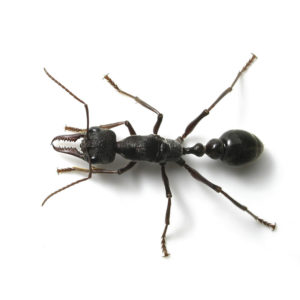
Bull or bulldog ants are big with characteristically large eyes and a nasty sting. They use their considerable jaws to deliver painful bites, and many species of bull ants have bright red or orange colours on their head or abdomen. They are found throughout Australia and range from 8-10mm in length. They will feed on animal prey and will also feed on plant material and nectar.
There are about 90 species of bull ants in Australia with diverse behaviours and life cycles. Nine bull ant species have been recorded in Sydney. Some of the smaller species are known as jumper ants after their habit of aggressively jumping toward intruders, however, they should not be confused with jack jumper ants, which also have large eyes, forward-pointing mandibles and the ability to deliver a painful sting via bites.
When their nest is under attack large aggressive ants will stream out of the nest to deliver a painful bite, often biting multiple times. If you’re bitten by a bull ant and an allergic reaction follows, urgent medical attention should be sought. For some people, a bull ant bite is more painful than a wasp sting.
Most species of bulldog ants have no colony workers; instead, the raiding queen will attack the nest of another species of ant and kill the opposing queen. She will then take over the colony.
BLACK HOUSE ANTS
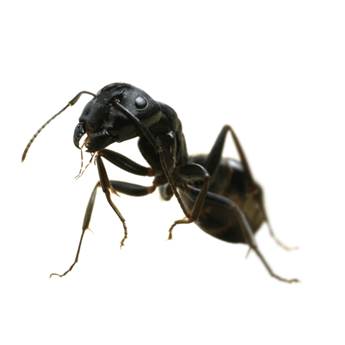
Black ants are small social insects, usually no more than 3mm or 4mm. The males have wings, while females only develop wings after mating, at which point she becomes the reproductive queen ant. While they do have stingers, they’re not big enough to cause painful stings.
Worker black house ants are sterile and their role is to maintain the nest, gather food and feed the larvae. Soldiers are also from the worker caste. Black Ants can be a pest around homes, especially when they get into the kitchen.
They make long trails from the nest to food sources and can come into the house under doors or through cracks and windows. When they are nesting in a house they can sometimes be detected by the mess of black droppings (frass) they leave on floors or window sills.
They generally eat sweet foods but will also eat plant materials, The queen black ant will lay small oval eggs which can be carried to higher ground during wet periods. The larvae are then fed by the adults once they have hatched until they pupate.
CARPENTER ANTS
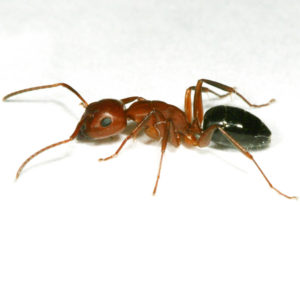
Carpenter ants are quite large and range from 6-12mm in size. They prefer to nest in dead or damp wood although it must be noted that they don’t actually eat it. Carpenter ants will attack if they feel they’re under threat.
A bite is generally followed by some pain, although the bite is considered less painful than a wasp sting or any other type of insect sting. In any case, individuals with a history of allergic reactions to painful stings or ant bites should seek urgent medical attention.
They vary in colour anywhere from orange-brown to a dark black. They often enter buildings to nest creating smooth tunnels through damaged or moist timber in wall cavities.
Carpenter ants have multiple queens and will often have ‘satellite’ nests in other areas nearby. Each nest could be as large as 100,000 workers and will take some years to reach full maturity. The workers will travel large distances for food. They eat anything sweet, but will also eat plant materials as well.
Coastal Brown Ant
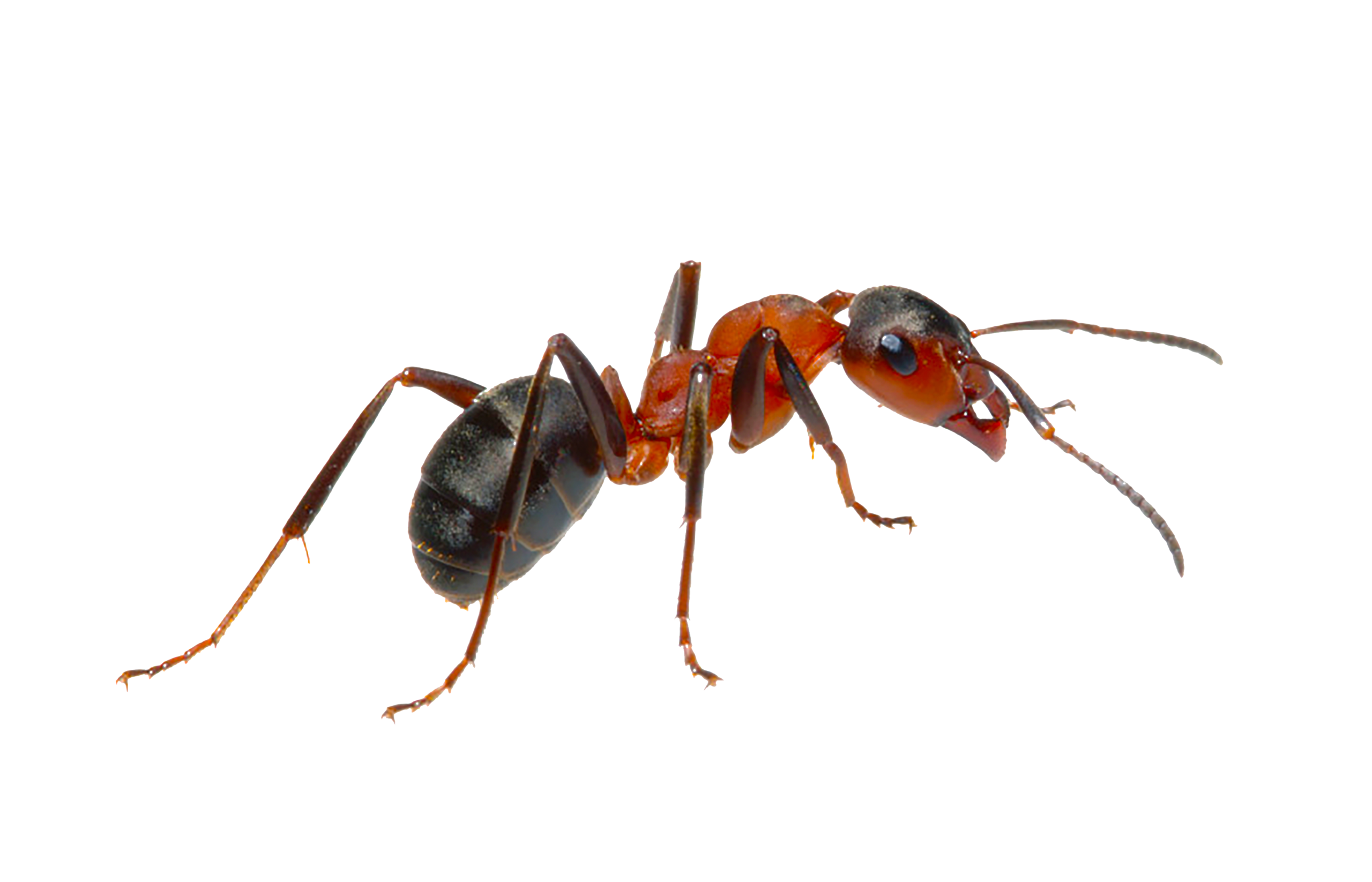
Coastal brown ants are social insects that have the ability to build massive colonies in an incredibly short amount of time. This has given them a reputation for being fast-spreading invaders, capable of taking over homes before the occupants or owners even know what’s going on. As long as you don’t suffer from allergic reactions from ant bites, coastal brown ants should be treated as a low-level threat.
Also known as big-headed ants due to their large cranium, coastal browns have a comparatively small body that can grow up to 2.5mm in size. Goldish brown in colour, they nest in dry soil and construct paths through gardens and on walls. Dirt mounds are a tell-tale sign that a coastal brown ant colony has been excavating nearby. If left untreated, there’s a chance they’ll invade and attack any food including meat, fruit, sugary sweets and greasy goods that have been left unattended.
In more bad news for homes, coastal brown ants hatch in 21 to 28 days, while the queen can lay almost 300 eggs in a one-month period and live 3-4 years. If you notice what you believe is a coastal brown ant infestation on your property, it’s imperative you act quickly before it gets out of hand.
Argentine Ants
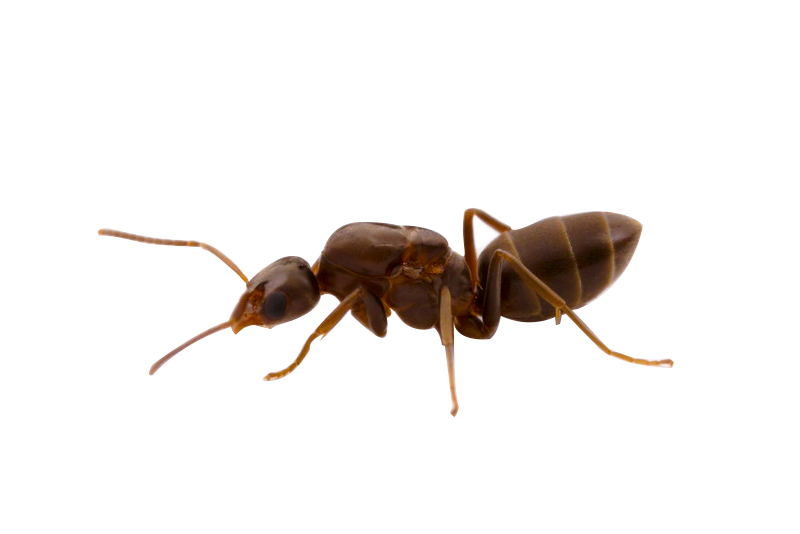
Argentine Ants are an introduced species originally from the South American countries of Argentina, Uruguay, Paraguay, Bolivia and Brazil. They are known to displace native Australian ants by expanding their colonies and then wiping out any local ant species.
Argentine ant workers are light to dark brown in colour and around 2.5mm long, while the queens are slightly bigger than workers at roughly 4-6mm long. A distinctive odour is emitted from Argentine ants when they are squashed but they do not sting or bite.
The most common sign that you have an Argentine ant infestation is a trail of ants travelling up trees and buildings and into your home. These trails should be pretty obvious, given that they’re both wide and active during both the day and night. Tracing this trail back to the nest, however, can be more difficult since worker ants will follow food trails over long distances.
Due to the pervasiveness of Argentine ants, it’s recommended that you contact us immediately if you suspect your home is under attack. We can then inspect your property to determine the severity of your problem and come up with the best solution to eradicate your Argentine ant infestation
Garden Ant
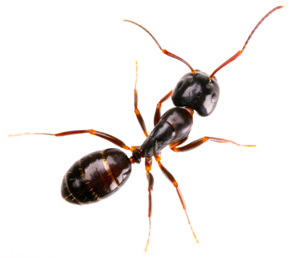
A native Australian species of ant, garden ants have no stinger but can form colonies up to 40,000 workers strong. In addition, some garden ants have been known to live for decades.
Workers are 4-5mm long, queens are 15mm long and all garden ants are dark brown and black in colour with an overall appearance that resembles the Argentine ant.
Garden ants can cause damage when building their colonies, displacing pavers, digging up gardens and ruining turfed areas in the process. These colonies will most likely be located in sandy soil or around a structure’s foundations.
As they are omnivores, they’ll eat protein for sustenance and sugar for the moisture component. They’re also known to roam indoors when looking for a water source, which can lead to them wreaking havoc in bathrooms and kitchens.
In regards to their queens, they’ll build a new nest almost immediately after mating and lay eggs in late spring. These eggs then take around 8 to 10 weeks to hatch. After a further 5 weeks, these larvae will transform into adults and become sterile female workers.
JACK JUMPER ANT
Jack jumper ants are one of the most aggressive ants in Australia, with large eyes and a bite that is far more painful than any wasp sting. They get their name from their tendency to jump towards anyone or anything they perceive as a threat. This makes them one of the more dangerous ants on this list.
They are generally 10mm to 15mm long and move with a jerky motion. They’re most commonly found in Tasmania but have also been known to exist in Victoria, ACT, New South Wales, and South Australia. Since they live in underground nests, finding their shelter can be incredibly difficult.
Like bees and wasps, they tend to sting rather than bite. This is performed by taking the victim in their mandibles then bending around in order to deliver the stinger, which is located in their tail. These stings can be very painful and swelling around the bitten area should be expected.
Residents have reported finding these ants in their homes and more specifically in their kitchens. You should call us right away if you suspect that your house has been infested by these dangerous insects given that they have the capacity to harm humans and small pets.





 Instagram
Instagram  LinkedIn
LinkedIn